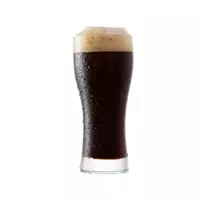Dark beer

Like light dark beer, it refers to low-alcohol drinks, which are made by alcohol fermentation of wort, consisting of barley malt, water and hops. The color of the beer directly depends on the degree of roasting of malt and the percentage of dark raw materials that are used in cooking.
Basically, in the process of producing dark beer, caramel or dark malt is needed. Interestingly, the darkest varieties of this raw material are not used on their own, that is, without light malt, since when roasting, the enzymes necessary for candling the wort are lost. The characteristic difference between dark beer is the moderate hop bitterness and rich malt taste.
It is customary to classify this foam drink by color not only in Russia, but also in some European countries, for example, in Spain. So, four main varieties of dark beer stand out. First, ale is a golden brown variety of dark beer that is produced only in Belgium and Britain. Then comes the porter, which is a reasonably strong dark beer. Initially, porter was made by mixing three types of beer: old ale, very strong beer and weak, not quite ripe fresh beer. Today, porter is a dark drink that tastes a little sweet.
Two more types of dark beer are stout and March beer. They are characterized by a saturated dark color, high viscosity and an increased alcohol content. Stout is divided into sweet and bitter varieties, and March beer takes quite a long time to ripen.
The benefits of dark beer
According to recent studies by Spanish scientists, it was found that the benefit of dark beer is that this drink has a slightly higher free iron content than light beer. It is clear that iron enters the human body with food, and this element contributes to the acceleration of the oxidation processes of organic compounds, which provide stability and aroma of dark beer.
Dark beer is proven to contain 121 billion shares of free iron, while light beer can "boast" only 9
2. According to Professor Carlos Blanco, a high content of free iron is primarily observed in extracts of hops and malt, which serve as the starting material for the manufacture of dark beer.
After such studies, many came to the conclusion that compared to a non-alcoholic and light drink, the benefits of dark beer are more significant, because such a macronutrient as iron is very important for the normal functioning of the human body. First of all, it is necessary for the production of hemoglobin.
dark beer 48 kCal
Energy value of dark beer (Ratio of proteins, fats, carbohydrates - ju):
Proteins: 0.3 g (~ 1 kCal)
Fats: 0 g (~ 0 kCal)
Carbohydrates: 5.7 g (~ 23 kCal)
Energy ratio (bj | y): 3% | 0% | 48%
 Español
Español Français
Français Português
Português Русский
Русский 简体中文
简体中文 繁體中文
繁體中文 日本語
日本語 한국어
한국어 العربية
العربية Türkçe
Türkçe Қазақ
Қазақ Deutsch
Deutsch Italiano
Italiano Українська
Українська
